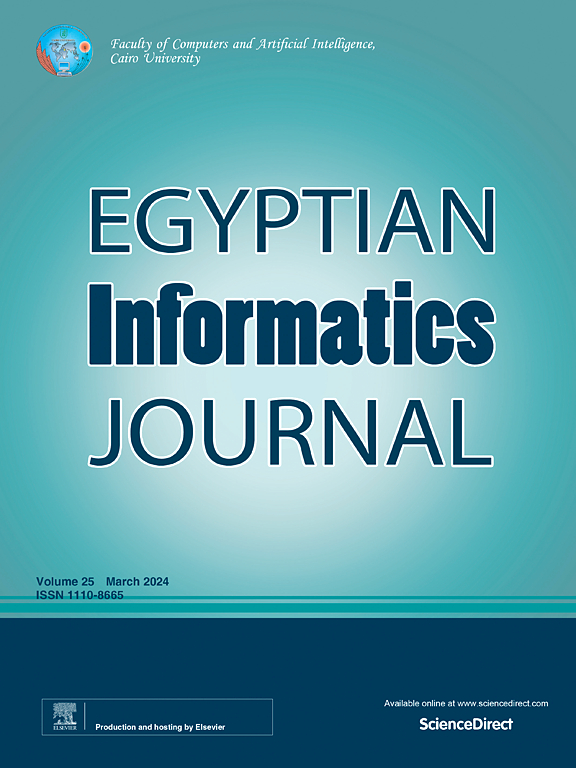Efficient GDD feature approximation based brain tumour classification and survival analysis model using deep learning
IF 5
3区 计算机科学
Q1 COMPUTER SCIENCE, ARTIFICIAL INTELLIGENCE
引用次数: 0
Abstract
The problem of brain tumor classification (BTC) has been approached with several methods and uses different features obtained from MRI brain scans. However, they suffer from achieving higher performance in BTC and produce poor performance with a higher false ratio. A convolutional neural network (CNN) based on BTC and a survival analysis model based on GDD (growth distribution depth) are presented. Initially, an adaptive median filter (AMF) is used to preprocess the MRI images in order to lower the amount of noise in the images. Secondly, in order to calculate the GDD value, the texture, shape, and gradient characteristics are extracted. Third, CNN is used to train the retrieved features based on the labels that were found. In the classification, the GDD features extracted are used to measure TSF (Tumor Support Factor) in each of them. The neurons of the network measure the value of tumor weight (TW) to perform classification. Additionally, the technique evaluates a patient’s survival and calculates the survival rate based on the TSF value of the growth characteristic. The multi-layer perceptron allows the computation of TW and supports the efficient performance of classification. The proposed method improves tumor classification performance by up to 97%.
利用深度学习建立基于 GDD 特征近似的高效脑肿瘤分类和生存分析模型
针对脑肿瘤分类(BTC)问题,有几种方法使用了从核磁共振成像脑扫描中获得的不同特征。然而,这些方法都无法在 BTC 中实现更高的性能,而且性能较差,错误率较高。本文介绍了基于 BTC 的卷积神经网络(CNN)和基于 GDD(生长分布深度)的生存分析模型。首先,使用自适应中值滤波器(AMF)对核磁共振成像图像进行预处理,以降低图像中的噪声量。其次,为了计算 GDD 值,提取了纹理、形状和梯度特征。第三,根据找到的标签,使用 CNN 对检索到的特征进行训练。在分类过程中,提取的 GDD 特征用于测量每个特征的 TSF(肿瘤支持因子)。网络神经元测量肿瘤权重(TW)值,从而进行分类。此外,该技术还能评估患者的存活率,并根据生长特征的 TSF 值计算存活率。多层感知器允许计算 TW,并支持高效的分类性能。所提出的方法可将肿瘤分类性能提高 97%。
本文章由计算机程序翻译,如有差异,请以英文原文为准。
求助全文
约1分钟内获得全文
求助全文
来源期刊

Egyptian Informatics Journal
Decision Sciences-Management Science and Operations Research
CiteScore
11.10
自引率
1.90%
发文量
59
审稿时长
110 days
期刊介绍:
The Egyptian Informatics Journal is published by the Faculty of Computers and Artificial Intelligence, Cairo University. This Journal provides a forum for the state-of-the-art research and development in the fields of computing, including computer sciences, information technologies, information systems, operations research and decision support. Innovative and not-previously-published work in subjects covered by the Journal is encouraged to be submitted, whether from academic, research or commercial sources.
 求助内容:
求助内容: 应助结果提醒方式:
应助结果提醒方式:


